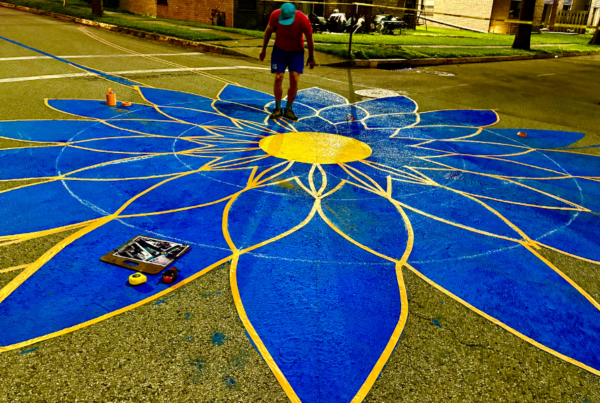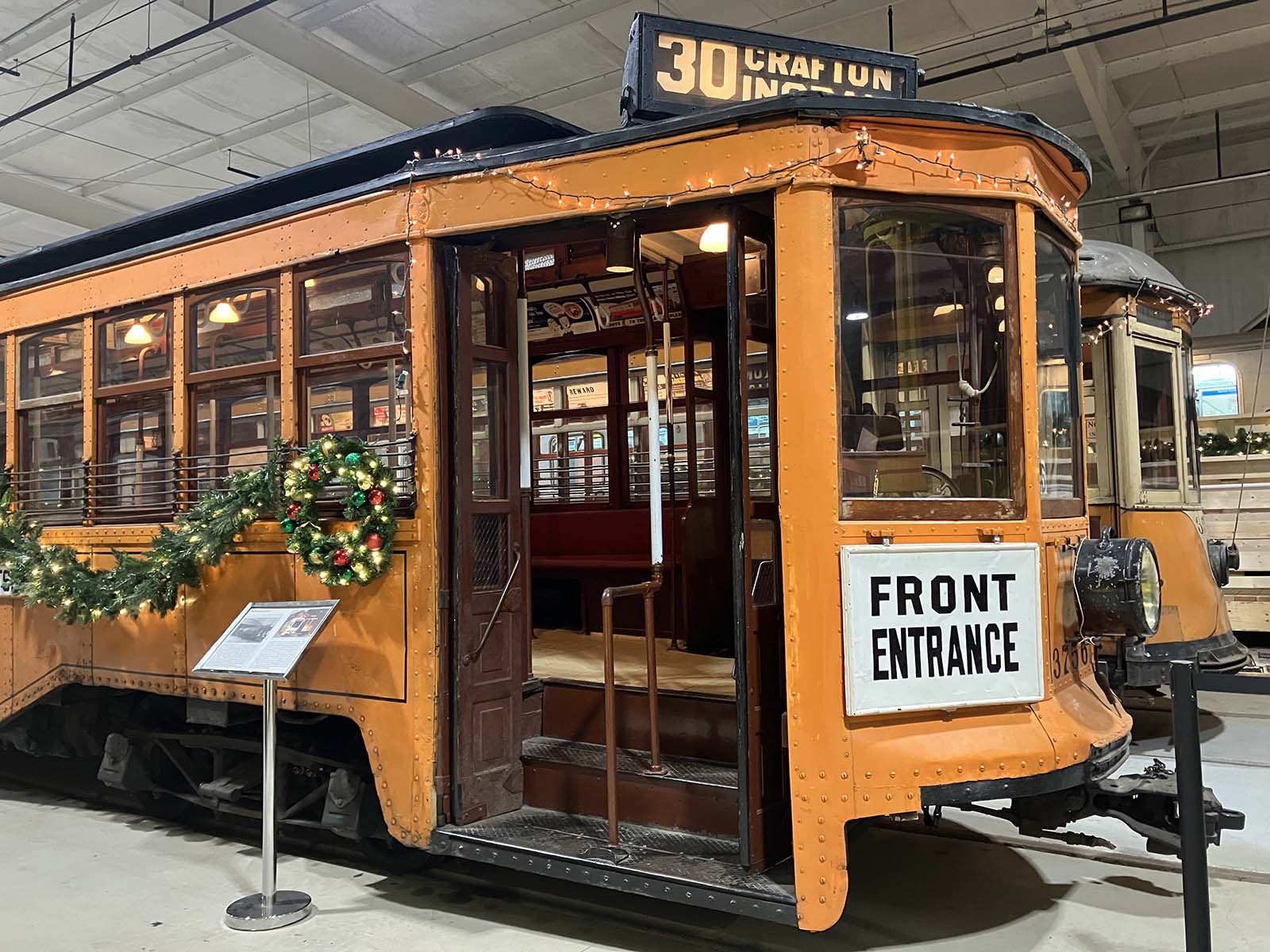
Community Spotlight—Pennsylvania Trolley Museum
The Community Spotlight series features the efforts of Rivers of Steel’s partner organizations, along with collaborative partnerships, that reflect the diversity and vibrancy of the communities within the Rivers of Steel National Heritage Area.
By Gita Michulka, Contributing Writer
Pennsylvania Trolley Museum Expands for Year-Round Visitor Experience
For the first time since it was established in 1954, the Pennsylvania Trolley Museum will be open to the public during the winter.
Two significant campus upgrades—a new 21,000 square foot Welcome and Education Center, and tube heating units inside the Trolley Display Building—now allow visitors the chance to explore and interact with the trolleys and displays even during the coldest months in western Pennsylvania.
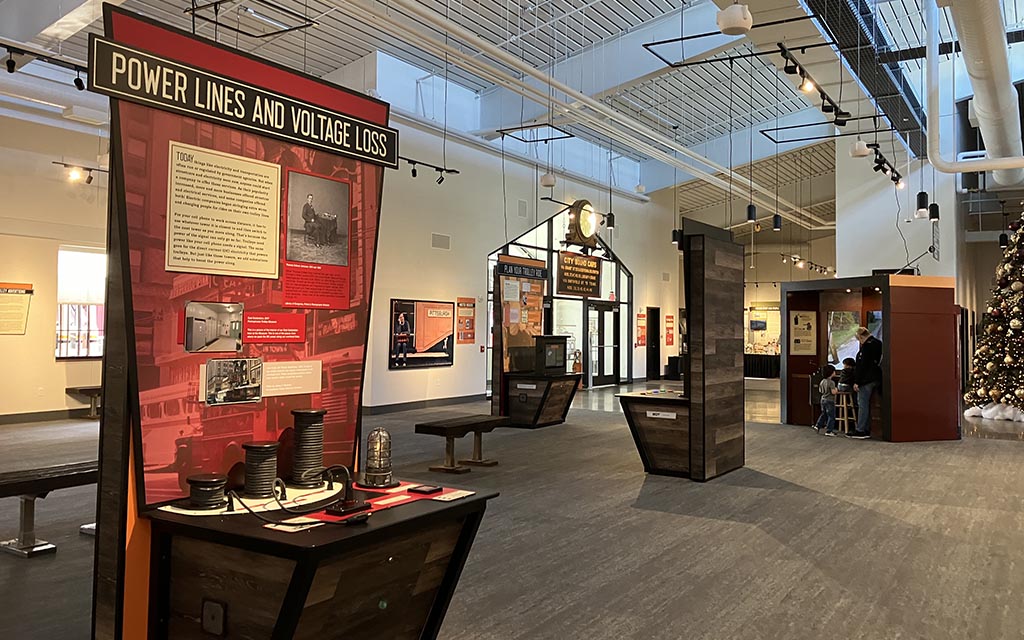
A view of the new Welcome and Education Center. Photo by Gita Michulka.
The Welcome and Education Center, opened to the public on November 10, boasts two spacious galleries for historical displays and interactive exhibits, a movie screening room, a STEM-focused classroom, a gift shop, a bank of restrooms, and upgraded parking. The interactive exhibits, including a simulator that allows even the youngest guests to “operate a trolley,” were created in partnership with the Carnegie Science Center and The Magic Lantern.
Inside the Trolley Display Building, rows of trolley cars dating back as far as the early 1900s line the aisles. Guests can learn more about different eras in trolley transportation from interactive video monitors installed throughout the area and can climb aboard most of the displays to get a view from within.
The heating units, funded by the Rivers of Steel Mini-Grant Program, now allow for a more temperate experience inside this uninsulated warehouse no matter the weather outside—a perk for guests and the volunteers who oversee the space alike. Though they were only recently installed, this upgraded climate control has already proved to be a big asset.
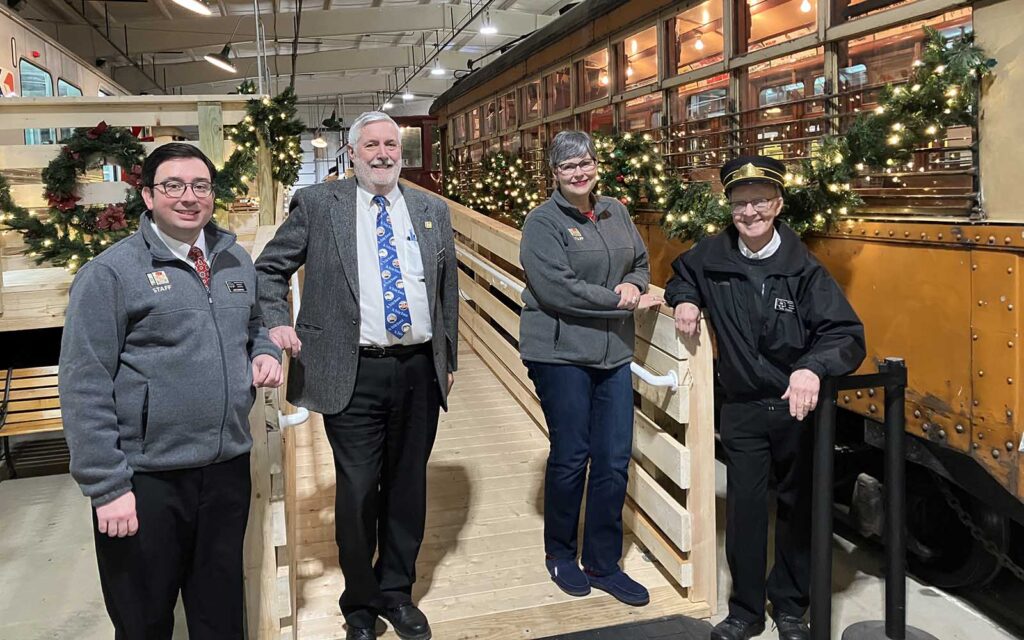
Members of the Trolley Museum Team: Trustee Rev. Jack Demnyan, Executive Director Scott Becker, Director of Annual Giving and Marketing Jeanine DeBor, and Education & Interpretation Manager, Mike Ziviello.
“Our Santa Trolley event, held every weekend from Black Friday through December 17, has been so much more enjoyable,” says Jeanine DeBor, director of annual giving and marketing. She notes that visitation during these special events has doubled since the building has been heated, but that the size of the new Welcome and Education Center, including upgraded parking and restrooms, allows guests the space to move about without it ever feeling crowded.
The Trolley Display Building now also includes an ADA compliant high-level platform—modeled as a replica 1920s elevated station platform—that makes some of the cars accessible to visitors in wheelchairs.
Executive Director and CEO Scott Becker is very pleased with how these upgrades to the museum enhance the overall visitor experience. “When you walk through the Welcome and Education Center and out onto the trolley line, it’s like stepping onto a movie set from another era,” he notes. “You really can spend a whole day here exploring all that we have on display, and now guests can do that year-round.”
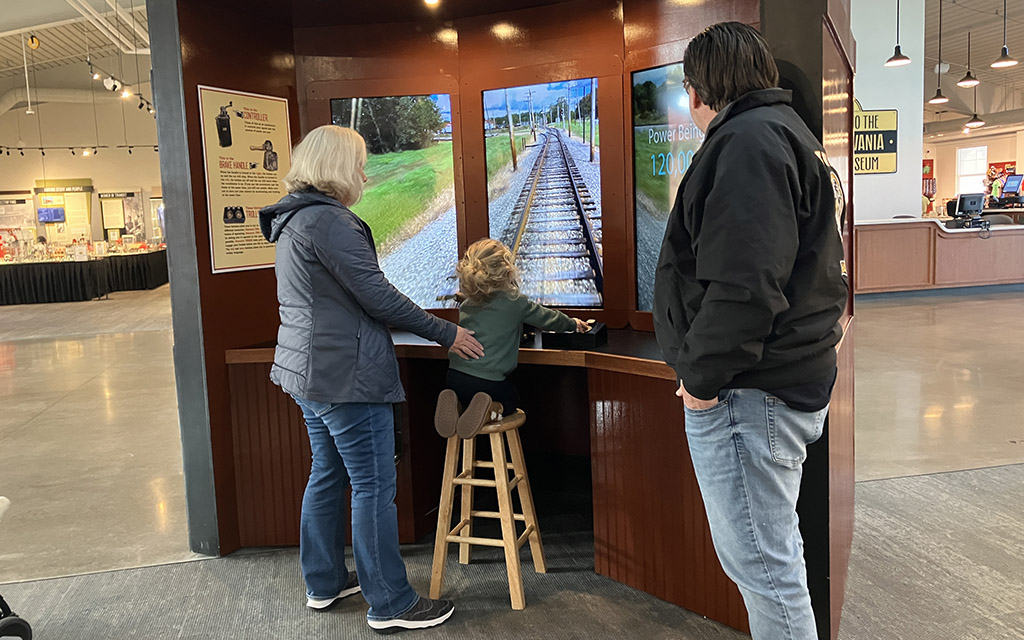
Even the youngest visitors can try operating this trolley. Photo by Gita Michulka.
Since its founding, the museum has received donations of artifacts from area residents, the Pittsburgh Regional Transit (formerly the Port Authority of Allegheny County), and Pittsburgh History & Landmarks Foundation. Items range from rail line signs, photographs, insulated milk canisters, and old telephones to maps of the city and state rail lines and benches from the original Pittsburgh & Lake Erie Railroad Station (now Station Square). Volunteers of the museum have meticulously restored them.
Though some of these items were already on display, most notably inside the Wexford Station that now sits between the Welcome and Education Center and Trolley Display Building, the expanded space allows for more of these items to be included in the experience.
The addition of solar panels on the rooftops of both buildings now produce enough electricity to power the operation of all the trolleys on site. This technology, paired with a study of how trolley cars operate, makes the museum the perfect hub for STEM learning too. DeBor points out that the museum facilities can now be used for school field trips and corporate retreats, as well as weddings and showers. “We recently hosted a school field trip of three hundred kids—two months ago we wouldn’t have been able to do that.”
Even while reveling in the new, upgraded experience at the museum, Becker is already looking to the future for additional ways to preserve the past, especially as they head into their 70th anniversary year. “We are currently fundraising for the fabrication and installation of seven new interactive displays, designed in partnership with the Carnegie Science Center. And we, of course, are always on the lookout for additional donations of materials that can be preserved at the museum, to expand on the story being told.”
The Pennsylvania Trolley Museum will be closed from December 23 through January 4. Beginning January 5, the museum will be open on Fridays, Saturdays, and Sundays through May, then Tuesday-Sunday during June, July & August. For more museum admission details, visit https://pa-trolley.org/plan-your-visit/.
About the Mini-Grant Program
Rivers of Steel’s Mini-Grant Program assists heritage-related sites and organizations as well as municipalities within the Rivers of Steel National Heritage Area to develop new and innovative programs, partnerships, exhibits, tours, and other initiatives. Funded projects support heritage tourism, enhance preservation efforts, involve the stewardship of natural resources, encourage outdoor recreation, and include collaborative partnerships. Through these efforts, Rivers of Steel seeks to identify, conserve, promote, and interpret the industrial and cultural heritage that defines southwestern Pennsylvania.
The Rivers of Steel National Heritage Area is one of twelve supported by the Pennsylvania Department of Conservation and Natural Resources (DCNR). Funding is provided via DCNR’s Community Conservation Partnerships Program and the Environmental Stewardship Fund to Rivers of Steel, which administers the Mini-Grant Program.
 Gita Michulka is a Pittsburgh-based marketing and communications consultant with over 15 years of experience promoting our region’s arts, recreation, and nonprofit assets.
Gita Michulka is a Pittsburgh-based marketing and communications consultant with over 15 years of experience promoting our region’s arts, recreation, and nonprofit assets.
If you’d like to know more about community projects supported by the Mini-Grant Program, read about the Fiberarts Guild of Pittsburgh.

